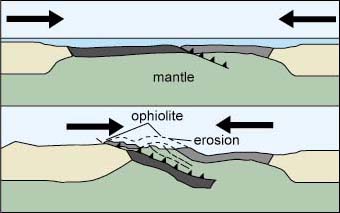SSSSnakes on the Beach! 🌎 EarthCache
SSSSnakes on the Beach! 🌎
-
Difficulty:
-

-
Terrain:
-

Size:  (other)
(other)
Please note Use of geocaching.com services is subject to the terms and conditions
in our disclaimer.
1) Compare and contrast the texture and color using the two reference points.
2) Hypothesize why the differences.
3) Find the largest horizontal crack in the rock face near the two waypoints and describe how long and wide it is, what direction it runs and how far it is from the stairs.
4) The glacial striations present here demonstrate that a glacier passed by. What direction are the scratches mostly running?

 This earthcache is located within Washington Park and is placed with permission and a permit. Note: An earthcache is the magical combination of geocaching and geological discovery. They vary greatly from traditional geocaches in that there is NO PHYSICAL CONTAINER! Once at the Earth Cache site, take in the scenery, the geological marvels or oddities, and read the cache description. You will likely be asked to answer some questions about the site and optionally take a picture. You can email the cache owner or use the Message Center to send answers to the required questions. Please don’t be intimidated about answering the questions. They are not graded and were meant to enrich your visit, open your eyes and provide you with new knowledge and insights about the location. Most importantly have fun!
This earthcache is located within Washington Park and is placed with permission and a permit. Note: An earthcache is the magical combination of geocaching and geological discovery. They vary greatly from traditional geocaches in that there is NO PHYSICAL CONTAINER! Once at the Earth Cache site, take in the scenery, the geological marvels or oddities, and read the cache description. You will likely be asked to answer some questions about the site and optionally take a picture. You can email the cache owner or use the Message Center to send answers to the required questions. Please don’t be intimidated about answering the questions. They are not graded and were meant to enrich your visit, open your eyes and provide you with new knowledge and insights about the location. Most importantly have fun!
 Snakes on the Beach, you may exclaim?! Why yes! But don't worry these serpents are harmless and won't bite.
Snakes on the Beach, you may exclaim?! Why yes! But don't worry these serpents are harmless and won't bite.
Proceed down the stairs to the rocks below. You may notice they resemble snakeskin and you would be right! This is serpentinite, considered to be the basal portion of the Fidalgo ophiolite and is derived from both dunite and peridotite.
 In 1821 Alexandre Brongniart named this assemblage ophiolite ("snake stone" in scientific Greek) after its distinctive exposures of serpentinite ("snake stone" in scientific Latin). Fractured, altered and faulted, with almost no fossil evidence to date them, ophiolites were a stubborn mystery until plate tectonics revealed their important role.
In 1821 Alexandre Brongniart named this assemblage ophiolite ("snake stone" in scientific Greek) after its distinctive exposures of serpentinite ("snake stone" in scientific Latin). Fractured, altered and faulted, with almost no fossil evidence to date them, ophiolites were a stubborn mystery until plate tectonics revealed their important role.
A hundred and fifty years after Brongniart, the advent of plate tectonics gave ophiolites a place in the big cycle: they appear to be small pieces of oceanic crust that have been attached to the continents.
Ophiolite’ refers to a section through oceanic crust that includes some portion of the underlying mantle, often but not always at a mid-ocean ridge, or spreading center. Ophiolite is not a particular type of rock, but a particular sequence of rocks. The classic sequence is shown in the diagram below.

Ophiolites are believed to be thrust onto the crust of island arcs or continents during ‘obduction’, which shoves the thin slab of ocean crust and some of the mantle over and onto the thin wedge at the leading edge of another portion of crust, rather than carrying it into the mantle by subduction. The ophiolite is often chopped up by faulting during obduction, so intact cross sections are uncommon.

The rock here at the shoreline ledge is a mix of both dunite and peridotite. One of the rock colors resulted from interaction of water with the pyroxene in the peridotite and the other color is because it is a dunite pyroxene-free rock. The ‘snake-skin’ is best seen on vertical, relatively freshly broken faces. The Ophiolite here is highly fractured from expansion as it was uplifted from great depths to the surface.
EDUCATIONAL LOGGING REQUIREMENTS
In order to substantiate your visit and comply with the educational requirement for Earth Caches you have to submit your answers to the following questions to the cache developers via their profile:
For purposes of logging this cache you must answer the following four questions.
1) Since the appearance of the Ophiolites vary greatly in this area please compare and contrast the texture and color using the posted coordinates and the WP1 reference point.
2) Hypothesize why the differences.
3) Since Ophiolites are generally broken up due to the obduction process find the largest horizontal crack in the rock face near the two waypoints and describe how long and wide it is, what direction it runs and how far it is from the stairs.
4) Also of significance at this site are the glacial striations present that demonstrate that a glacier passed by. What direction are the scratches mostly running?
|
Resources:
http://blogs.agu.org/georneys/2011/02/10/geology-word-of-the-week-o-is-for-ophiolite/
Additional Hints
(No hints available.)